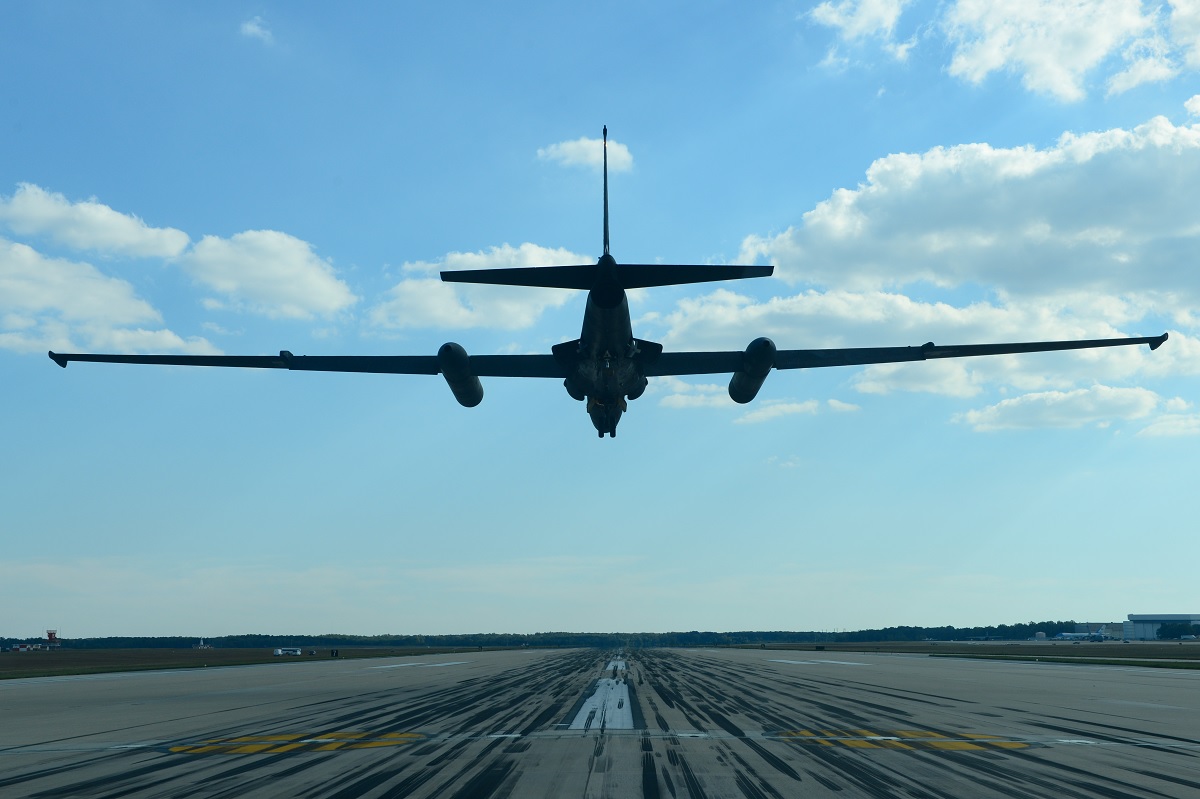‘It’s essential to approach the landing as slowly as possible, i.e. close to the stall because this beast likes to float in ground effect,’ John Joss, nonfiction and novel writer and journalist who flew aboard the U-2.
The iconic U-2 Dragon Lady provides high-altitude, all-weather surveillance and reconnaissance, day or night, in direct support of US and allied forces.
Routinely flown at altitudes over 70,000 feet, the U-2 pilot must wear a full-pressure suit similar to those worn by astronauts. The low-altitude handling characteristics of the aircraft and bicycle-type landing gear require precise control inputs during landing; forward visibility is also limited due to the extended aircraft nose and “taildragger” configuration. A second U-2 pilot normally “chases” each landing in a high-performance vehicle, assisting the pilot by providing radio inputs for altitude and runway alignment. These characteristics combine to earn the U-2 a widely accepted title as the most difficult aircraft in the world to fly.
‘Having spent time in the U-2 cockpit, I’d like to explain a little of why the U-2 is hard to land, beyond merely identifying it as difficult,’ says John Joss, nonfiction and novel writer and journalist who served in the Royal Navy, on Quora.
‘First, it uses a straight, untwisted wing without ‘tip washout,’ so that the entire wing stalls at the same instant. It’s essential to approach the landing as slowly as possible, i.e. close to the stall because this beast likes to float in the ground effect (see photo below). It looks as if we’re going to land short since we’re over the over-run, but in fact, we will touch down a long way down the Beale AFB runway, where I took this picture.

‘The untwisted wing is integral to the U-2’s ability to fly at great altitudes, but this places it in ‘coffin corner’ at high risk to aviators. Coffin corner is the region of flight where a fast but subsonic fixed-wing aircraft‘s stall speed is near the critical Mach number, at a given gross weight and G-force loading. In this region of flight, it is very difficult to keep an airplane in stable flight, and this is the region the U-2 occupies at altitude…’
Joss continues;
‘The stall indication, absent a root burble, is aided somewhat by the small horizontal ‘bumps’ sweated onto the wing leading edge, which provides a (barely detectable) burble at critical airspeed approaching the stall.
‘The U-2 is not highly stressed, unlike a fighter aircraft, and takes a gentle hand. It comes down final at stall +10%, rather than the much higher proportion used by fighters.
‘The U-2’s undercarriage is part of the challenge: bicycle gear, relatively small wheels. The wings are supported by mid-span ‘pogo’ struts inserted by the ground crew after landing (they fall out on rotation). This means that if a wing drops, wingtip drag may cause a ground loop. Many excellent aviators have performed this maneuver.’
Joss concludes;
‘Crosswinds are a significant landing challenge in the U-2, which is ‘short coupled.’ I recall something like +15 degrees and 15 knots of crosswind called for an alternate.’
Photo by U.S. Air Force

